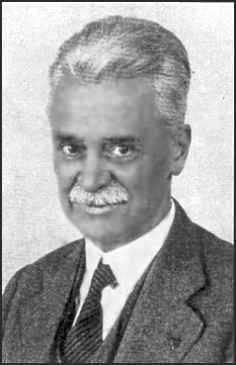
Page 5 |
 |
| 1AW of the old days was as fine a spark station as ever existed. You, remember T.O.M.'s rotary gap, Old Betsy? Well, sirs, Old Betsy herself was at 1AW, cunning product of a mechanical engineer, generator of a tone famous throughout the country in the old days. Old Betsy ran 8,000 r.p.m., belt driven from a half-horse motor. She was in a box in the corner of the cellar and she was decorated with two large oil drip-cups. From seven 0'clock until one A.M. she did her stuff nightly in those glorious days, punctuated only by a trip to the cellar mid-evening to replenish the oil. She is now to be preserved in the A.R.R.L. Museum. The reader may know with what enthusiastic delight such a person as Mr. Maxim sat down at his amateur stations. The editor, during his first bachelor year in Hartford, was the junior operator at 1AW, and did we put Old Betsy through her paces! Mr. Maxim believe in message traffic and in relaying, and nothing gave him more operating pleasure than to hook up with a good clean fist and clear the traffic books in both directions. 1AW was on one end of almost all our early A.R.R.L. records and we recall many a thrilling evening there with Mr. Maxim and Fred Schnell when something hot was on. Early amateurs willl remember the record-breaking "transcons," when messages were relayed across the continent via several stations and the reply returned from the opposite coast. Six and a half minutes, the record was, and with 1AW the eastern terminal. And do you remember the record of four minutes, eighteen seconds, for a round-trip message from Hartford to Hawaii with only one relay at Sleepy Eye, Minn., away back when? Again, 1AW. Not particularly active the last several years, the Chief still sat in at some of our stations an occasional evening and he regularly sent the Navy Day broadcast from W1MK. |
|
After the opening of international amateur communication Mr. Maxim quickly foresaw the need for
international unity. By means of two visits to Europe he brought abut the formation in 1925 of the International Amateur Radio Union,
a world-wide federation of national societies like our A.R.R.L. As in the case of our League, he was the Union's first and only
president. The amateurs of all the world have lost their leader in his passing. The man who founded A.R.R.L. would never shirk in its defense, and in that field H.P.M. had a brilliant record. The first instance of A.R.R.L. influence at Washington was his appearance before the Commissioner of Navigation in late 1914, as our president, where was secured the concession of operating selected A.R.R.L. relay stations on 425 meters instead of the usual 200--to facfilitate long-distance relaying. He directed our fight and personally headed our delegation to Washington in late 1918 when we were having an awful battle with the Navy, which wanted the control of all radio. That was the occasion upon which A.R.R.L.'s famous "blue card" went out, devised and written by Mr. Maxim. The story of that battle is a thrilling tale in itself. Suffice it here to say that the Old Chief won. The next year there was more of the same, with the League, under Mr. Maxim, finally getting the war-time ban lifted and orders issued which permitted the resumption of amateur radio. He attended, we believe, all of the national radio conferences and of course took an active part in our representation at the Washington International Conference in 1927. He is the author of that splendid brief on amateur radio that was delivered before the Senate Interstate Commerce Committee in 1930 when the Dill bill was under consideration; it was printed in QST at the time. |


 Page 6 Page 6
|